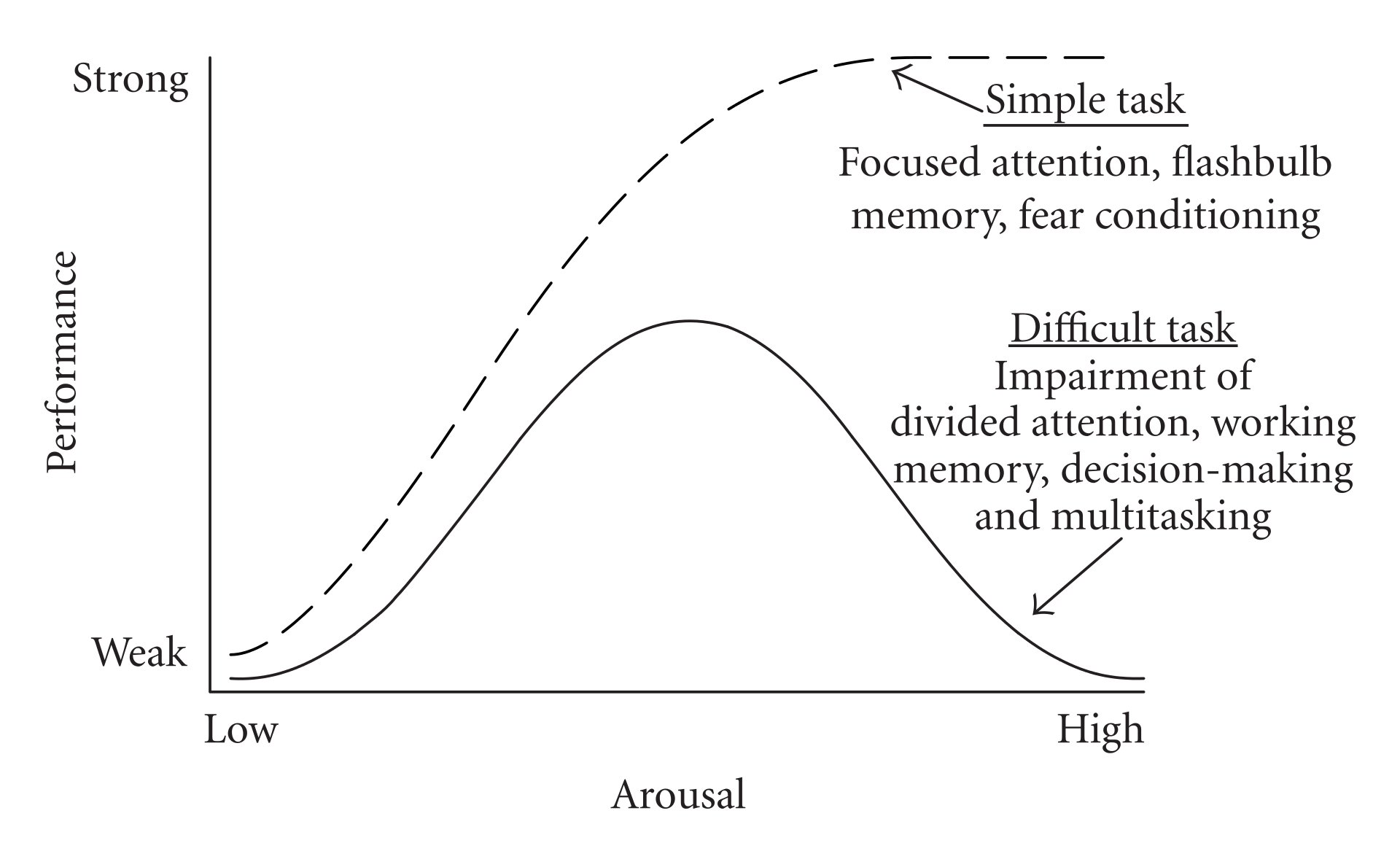Helpful Harm & Hidden Tradeoffs
A Primer on Antifragility
Why care about antifragility?
I’d like to share what I consider one of the most important concepts within the realms of risk and decision making; the concept of antifragility.
It's difficult to overstate how useful this concept is. Antifragility helps explain why overprotecting systems and people harms them, why you should love mistakes, why centralization and top-down leadership fails, why speed/efficiency/size have serious and often hidden tradeoffs, and why the less you know the more certain you can be in a course of action. Its application is extremely broad as well; it has been used in risk analysis, molecular biology, transportation planning, physics, engineering, aerospace, and computer science. In my opinion, it should be a core learning for every leader and emergency manager. This short article will capture some of the key components of antifragility but will also leave out many more such as non-linearity and the concept of fat-tails – to be explore in later articles.
I originally discovered the concept of antifragility through the work of Johnathan Haidt, a social psychologist, while reading his book The Coddling of the American Mind (coauthored by Gregg Lukianoff). In the book, Haidt introduces the concept to tie together the rise of overparenting (helicopter/bulldozer parents) and a lack of unstructured free play to the dramatic rise of youth mental health issues, among other driving factors. The concept had such strong explanatory power in terms of the mental health trends that I couldn’t help but explore it further.
As Haidt noted, he learned of the idea from Nassim Taleb –a practitioner and philosopher of risk among many other things- who developed the concept in his book Antifragile and supporting technical papers. After reading Antifragile and some of Taleb’s technical work, it struck me how incredibly useful this concept was and how essential it is to understanding risk and preparedness. Since then, it has become a core component of my professional philosophy and how I approach work within the field of emergency management.
That’s enough gushing over how useful I find this concept; let’s cover an overview of antifragility and explore a little bit about how we can apply it to our benefit.
What is antifragility?
In essence, this concept categorizes things (objects/people/systems/structures/etc) based on what they have to gain or lose from disorder. Disorder being anything that can cause or lead to stressors or disruption, such as volatility, entropy, time, randomness, errors, uncertainty, incomplete knowledge, and so forth. It breaks things into three broad categories: fragile, robust, and antifragile.
 The Fragile – More to lose than gain from disorder/stressors
The Fragile – More to lose than gain from disorder/stressors
To put the concept into analogy, fragile things are like a porcelain teacup. In general, the teacup doesn’t get better from being dropped (stressor) and will likely break if not carefully protected over the years (time). It doesn’t have a lot to gain from disorder but plenty to lose.
 The Robust – Does not gain or lose much from disorder/stressors, stays nearly the same
The Robust – Does not gain or lose much from disorder/stressors, stays nearly the same
Meanwhile, the robust is similar to a soccer ball. It isn’t harmed by being dropped or kicked around (stressors), in fact it is designed to withstand that disorder, but it also doesn’t benefit from it either. Robust things may eventually become fragile over time due to continued exposure; eventually the soccer ball will become less resilient and fall apart (time/entropy). To be robust it doesn’t mean that it is resilient to all stressors forever, but rather for its purpose and intended lifetime, it stays relatively the same in the face of disorder by being neither harmed nor enhanced by it.
 The Antifragile – More to gain than lose from disorder/stressors (within limits)
The Antifragile – More to gain than lose from disorder/stressors (within limits)
One of the best ways to understand antifragility is to consider how muscles react to stressors and their absence. When working out or doing other physical activities, your muscles are being stressed and “harmed” at a micro level. This causes the muscle to rebuild itself and overcompensate for the stressor, overcompensation being a key feature of antifragile things, which leads to greater muscle mass and strength over time. Conversely, what happens when muscles are deprived of stressors – even to the degree of limiting normal day to day activity? Atrophy. Much like someone who is bed bound loses significant muscle due to the lack of exercise, so to do antifragile things become weaker in the absence of stressors. In this way, some degree of disorder/stressors are essential for antifragile things so they do not decay and become weak over time.
Antifragile things are all around us and are far more common than you may expect. Your immune system is antifragile. We’re born into this world with an immune system which requires stressors to learn. Without these stressors, particularly as we develop, we’re likely to have a reduced capacity to fight off infections and may even experience allergy issues. The colds, flus, and all other sorts of bugs we catch throughout childhood is critical information for the immune system, which in turn uses it to detect and fight off future infections.
Conversely, should we practice shielding our children from potential harms, we can expect a significant rise in fragility over time. A clear example of this is peanut allergies; where we used to advise parents of children who had a potential for peanut allergies to avoid peanut products. At the same time, we saw a 21% increase in the number of peanut allergies in children from 2010 to 2017. Since then, we’ve learned to leverage the wisdom of antifragility to dramatically reduce peanut allergies through the use of exposure therapy.
These concepts show up everywhere; in how we design our infrastructure, how we develop our teams and organizations, how we design our processes and plans, why vaccines work to prevent disease, even how we take care of ourselves and others can be thought of in terms of increasing or reducing fragility. When I deploy, I am most concerned about disaster response teams that haven’t seen action for a bit (disorder/stressors) and thus may have some fragilities they wouldn’t otherwise. It is part of the reason I’m far more concerned when I see an area struck with an earthquake that rarely experiences them opposed to one that routinely does. Without those stressors, things become fragile and vulnerable over time.
Dose dependence
I want to put a clear caveat on this and hopefully head off some common objections. All of this involves the concept of dose dependence – or put another way – the dose determines if it is medicine or poison. Letting your kid get a few bruises playing unsupervised is a good thing while dropping them in the middle of the woods with a hatchet to “build character” isn’t. Things are only robust or antifragile to impacts to an extent; everything has a limit where increased dose will cause net harm. The key here is getting the appropriate amount of disorder/stressors, which as we’ve already covered is rarely – if ever – none.
This concept of dose dependence and antifragility shows up in quite a few domains. Within education, you have the Zone of Proximal Development which captures what the student can do alone, what they can’t do, and what they could do with help. Things they can do alone easily become boring while things they can’t do at all are frustrating and discouraging. But, things they can do poorly- or can do with help- is precisely where learning occurs. If the student isn’t presented any challenging material (stressors/disorder), they don’t learn. If the student is presented with material too far beyond their current level of comprehension/competency, they don’t learn. It requires getting the dose/difficulty right to build that capacity over time.
This also shows up in psychology with the Yerkes-Dodson “law”. In attempt to understand how stress impacts performance, psychologists Robert Yerkes and John Dodson studied how people performed with various levels of stress for both simple tasks (eg: move a box) and complicated tasks (eg: complex decision making).

As the graph indicates above, performance on simple tasks tends to increase with arousal (stress) up to a certain point at which point it plateaus. This is really only true for very basic tasks such as simple physical tasks or memory games. With difficult or more complex tasks, we see that performance increases with stress – up to a point- and then decreases as more stress is added. Once again, dose dependence. In this case an antifragile thing, our performance on a difficult task, is harmed without some stressors (key feature of antifragility) but is also harmed by too much. If you’ve ever worked with a team that at times moves incredibly slow due to a lack of pressure (or accountability), and if you’ve worked with a team that has made costly mistakes due to too much pressure or stress, you’ll recognize the principle of dose dependence immediately.
What leads to fragility?
There are a multitude of factors that influence the fragility/antifragility of a thing and most of them involve tradeoffs. Many of the features we traditionally consider beneficial (such as growing our organization) also bring with them significant and often hidden tradeoffs when it comes to risk and fragility. With that in mind, the list below is not a list of things that are inherently bad. Instead, it captures the hidden tradeoffs associated with fragility that we typically don’t consider when thinking about these features.
|
Increases Fragility |
Decreases Fragility |
|
Top-Down Leadership
|
Delegation to the lowest possible level, use of mission-type tactics
|
|
Efficiency
|
Redundancy, excess, and overcompensation
|
|
Highly stable environments/systems
|
Environments with variability
|
|
Reliance on prediction
|
Options and adaptability
|
|
Larger size
|
Smaller size
|
|
Faster Speed
|
Slower Speed
|
|
Absence of challenges
|
“Right sized” challenges
|
|
Interdependent systems/things
|
Independent systems/things
|
The key here isn’t to categorically avoid the things in the left column (although that is a philosophy I tend to practice), rather it is to illustrate that there are hidden tradeoffs and unintended consequences that frequently increase our fragility. Failing to recognize and account for these tradeoffs, in addition to properly mitigating them, is the primary danger here.
Antifragility, Leadership, & Decision Making
While antifragility has a multitude of other features and implications to cover – particularly for leadership and emergency management, this article was instead intended to provide a broad overview of the concept and focus in on two key principles: the importance of stressors for antifragile things and the danger of hidden tradeoffs.
Understanding the importance of stressors for growth and performance of antifragile things is critical for effective decision making. Antifragile things are harmed without stressors and will become more fragile over time. This applies to nearly everything in our lives. If we shelter our children from all stress, we raise fragile kids both physically and mentally. If live sedentary lives, our muscles atrophy and our health degrades. If we fail to properly challenge our teams and organizations, we can expect them to become ineffective, disengaged, and to buckle under stress when it comes. If we stop every small wildfire, we can expect larger and uncontrollable fires in the future with more land burned (see the wildfire paradox). And although we must keep in mind the principle of dose dependence to get the balance right, it is clear that the avoidance of all stressors/harms is likely the riskiest strategy itself.
Furthermore, the concept of antifragility shows us the danger of hidden tradeoffs. Frequently in my experience, leaders are ignorant or dismissive of these tradeoffs to the detriment of their organization and teams. We often become fixated by our shiny new interconnected system, excited about how quickly we can do a task, grateful for a calm and steady environment, proud of our growing team, confident in our predictions, and self-assured of our leadership all to fall prey to a quietly growing mountain of fragility and risk.
These tradeoffs are particularly nefarious because the warning signals may not show up until it is too late to act. For example, the larger the size of the organization the more opaque it is to any individual within the structure. This makes it harder for leadership to see warning signals in their organization as they are hidden under layers of structure, expertise, processes, and agendas. This challenging aspect also shows up in the fragilizing nature of increased speed. With increased speed in our processes or systems, we’re unlikely to have the time to catch errors before pileups occur or cascading consequences start taking place. In this way, these aspects both increase our fragility while simultaneously decreasing our ability to detect it. Being able to expect, understand, and mitigate these tradeoffs is essential for leadership and effective decision making. This perspective understands that “there ain’t no such thing as a free lunch” and that tradeoffs exist in every decision – whether we see and understand them or not.
A leadership and risk management perspective that integrates antifragility takes a very different approach than one that doesn’t. To an antifragile leader, mistakes and stressors are critical pieces of information – they serve as either an incredibly valuable warning signal or an opportunity to build strength where there once was vulnerability. Opposed to being bothered or dismayed when a challenge arises, it is instead seen as both an opportunity for growth/improvement and a validation that problems are not being buried beneath the surface to fester and grow. This leader understands why they feel nervous after it’s been quiet for too long; they know either their teams are not being challenged enough, problems are not being raised and shared, or people may be completely unaware of problems that are brewing (particularly deadly). With this mindset, challenges are to be cherished as both an opportunity to grow and invaluable information to inform future decisions.
